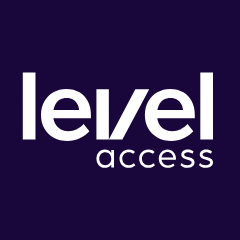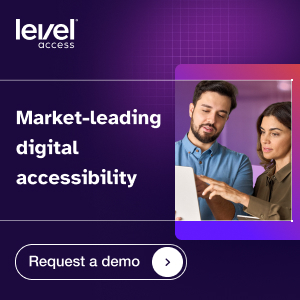Understanding Accessibility Auto Scans: 5 Take-Aways
Mar 10, 2021
1. Understand the Nature of Automated Scans
What are automated accessibility scans? Simply put, accessibility scans are software used to help automatically detect accessibility issues. Incorporating straightforward rules of “if this, then that,” scans will detect the existence of an accessibility issue and produce an error alert. Scans can be very helpful for both litigation and auditing purposes by saving time and reducing errors. Some popular scans include:
When it comes WCAG success criteria, many are not as simple as checking off a box. Because success criteria are multilayered, rulesets for scans can’t account for the full requirements of most success criteria. Keeping that in mind, of the 50 WCAG 2.1 AA success criteria, 20-25% can be flagged with scans.
Scans are additionally limited in functionality. They can flag errors — which is helpful, but those errors will still need to be manually identified, evaluated, and of course, resolved.
2. Don’t Confuse Scans with Overlays
It’s important to keep in mind that scans and overlay technology are not the same thing. Automated scans can quickly identify a site’s accessibility issues–those issues that automation can detect–so that your team understands how many errors are present and where the error exists. Overlay technology can scan for common errors and then can address those errors so the barrier is removed for the end user. It’s important to remember that any type of automation has limitations. Identifying every accessibility issue requires human intervention and expertise.
3. Don’t Overplay Your “Scan Hand”
As mentioned above, scans are a helpful part of an organization’s digital accessibility approach, but they are by no means a solution. Knowing what scans can not do is as important as knowing what they can do. For example:
- Form Labels – A scan can determine if it is present. It can not determine if it is accurate or if the code’s programmatic form label matches the visual label.
- Page Titles and Page Language – A scan can determine if a page title or language is present but not accurate or sufficient.
- Color Contrast – A scan can determine whether text color contrast ratios are accessible but can not programmatically determine if an image background color is accessible.
- Empty Headings, Buttons, and Links – A scan can flag that these are empty, but manual testing will be required to analyze what should be added to fix the issue.
- Landmarks and Regions – A scan can tell us if navigational landmarks are present, but not if they’re sufficient or appropriate.
- Tab Index and Skip Link – Scans can determine if they are present but not functional.
And, keep in mind the many accessibility criteria that most scans do not take into account, including the following accessibility components:
- Closed captions
- Text transcripts
- Reading order
- Not solely relying on shape, size, visual location, sound, color to relay instruction.
- Mechanism to pause, stop, hide, mute audio/movement.
- Text unnecessarily in images
- No unnecessary horizontal scrolling when content is on mobile
- No loss of content or functionality on zoom
- Keyboard functionality
- No keyboard trap
- Time limits can be adjusted or turned off.
- Focus order is logical.
- Multiple ways to find other web pages
- Visible focus indicator
- Navigation links do not change order.
- A change to the page doesn’t happen with focus.
4. Be Aware of False Negatives
In some cases, a site optimized for an accessible experience can trigger false negatives in scans that can only detect a value’s existence or absence but not the bigger picture of user experience. Conversely, just because you pass an automated scan doesn’t mean your website is accessible. A 100% score is not dispositive. To demonstrate this, the owner of the website Matuzo.at purposely crafted a site to score 100% on an automated scan in spite of being functionally inaccessible. His point? Automated scans – and their scores – are just the starting point! They’re a helpful tool in any organization’s comprehensive digital accessibility testing, remediation, and maintenance program.
5. True Accessibility Is Not Instant
Scans are beneficial tools, but true accessibility is always the result of commitment and continuous effort. There is no such thing as instant accessibility/compliance.
Connect with us today to learn more about our automated and manual auditing capabilities and extensive range of digital accessibility services designed to help keep you compliant with ADA, AODA, Section 508, and other global regulations.
Subscribe for updates


